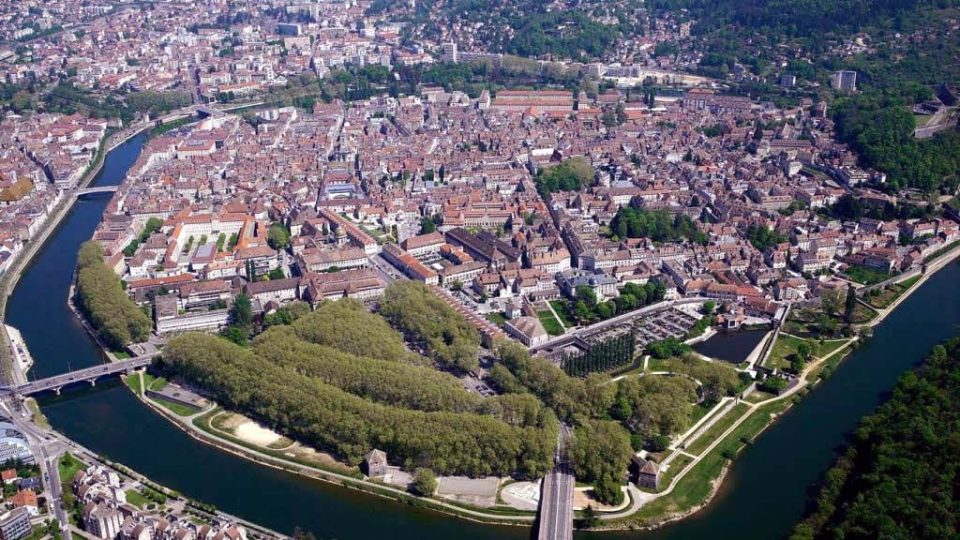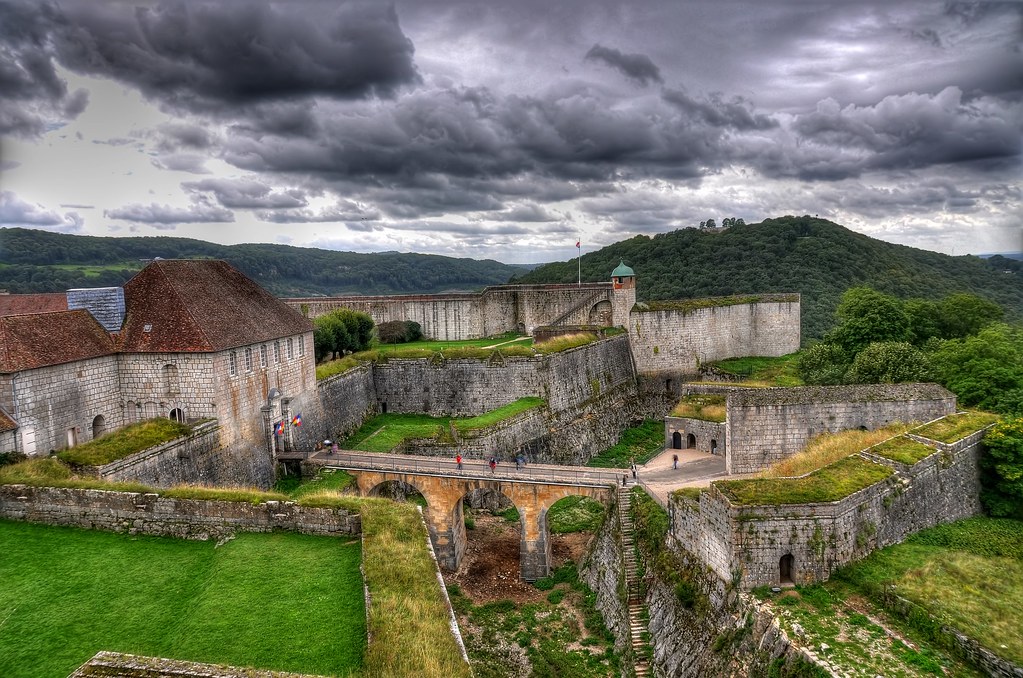Things To Do In Besancon, Franche-Comté
The best thing to do and sights to see in Besancon include the UNESCO World Cultural Heritage-listed Vauban citadel (Citadelle); the Museum of Fine Arts (Beaux-Arts); the Cathedral St Jean with astronomical clock; the Palais Grenville with the Museum of Time; palaces in the old town; and the magnificent natural setting of the old town in a meander of the Doubs River. In Besancon, tourists can visit cultural and historical sites; stroll through leafy parks and along the banks of the Doubs river; see the lively old town with cafés and outdoor restaurants; as well as enjoy seemingly endless opportunities for outdoor adventures within minutes of the town center.
Here Are Some Of The Best Things To See In Besancon
The UNESCO-Listed Vauban Citadel in Besancon
The top sight to see in Besancon is the mostly seventeenth-century citadel (Citadelle) that towers over the town. This impregnable fortress was designed by Vauban for France’s Sun King Louis XIV after Franche-Comté was won from Spanish protection and became part of France. The fortress at Besancon is, together with eleven further Vauban-designed fortresses, inscribed on the UNESCO World Cultural Heritage list.
The citadel in Besancon offers in addition to the fortress and military structures excellent views of Besancon, the Doubs Valley, and surrounding hills. The citadel furthermore houses several museums, including local history and Second World War resistance. Also, there is a zoo with a small aquarium, insectarium, and noctarium.
Top Museums to See in the Old Town of Besancon
The old town of Besancon lies within an almost full meander, or oxbow, of the Doubs River. This strategic advantage meant that Besancon had been settled by humans since pre-Roman times. Besancon had once been a free city in the Holy Roman Empire, but with the rest of Franche-Comté was a Spanish protectorate (through the Habsburg connection) before becoming part of France in the late seventeenth century.
The fine arts and archeology museum (Beaux-Arts et de l’Archéologie) has an eclectic but impressive collection ranging from Egyptian antiquities to modern art. Its paintings gallery with works from the Middle Ages to the present is particularly remarkable. It is located on the huge and lively Place de la Révolution square near the outermost reaches of the loop in the Doubs River.
Palais Granvelle, at 96 Grand Rue, is a sixteenth-century Renaissance palace and the most impressive civilian building in Besançon. It once housed the representative of the Habsburgs but currently is the home to the Museum of Time (Musée du Temps), reflecting Besançon’s long watch-making tradition.
Top Sights to See in the Old Town of Besancon
Grand Rue is the prestige address in old town Besançon – it leads from the loop in the river through the old town to the Porte Noire and cathedral where the name changes to Rue de la Convention. In addition to several palaces with interesting courtyards and staircases, note the sixteenth-century Hôtel de Ville, as well as the Renaissance façade of the Palace of Justice directly behind it.

Palais Granvelle is the grandest palace in the old town – enter to see the impressive courtyard for free even if not visiting the museum. Behind the palace is a pleasant shady park with outdoor cafés and the neo-Classical municipal theater (Théâtre Municipal de Claude Nicolas Ledoux) in the far corner.
Besancon’s most famous son, Victor Hugo, was born at 140 Grand Rue but spent most of his childhood in Paris. The brothers Auguste and Louis Lumiere were born across the square at 1 Place Victor Hugo. They too soon left Besancon and spent most of their childhood in Lyon before making their breakthroughs in cinematography.
Nearby are some Roman ruins of an aqueduct and the two Roman pillars incorporated into Besancon’s city emblem. Regular road traffic still passes through the Porte Noire, a Roman triumphal arch dating from the second century AD.
Besancon’s cathedral (Cathédrale St-Jean) dates partly from the twelfth century, but large parts of the church are Baroque. The most famous artwork is a Madonna altar painting by Fra Bartolomeo, the teacher or Raphael. The nineteenth-century astronomical clock made of around 30,000 components is demonstrated a few times per day.
Parks and Forts in Besancon, Franche-Comté
Besancon claims to be one of the most environmentally friendly cities in France and has a very good public transportation system as well as excellent paving and dedicated bicycle routes.
The banks of the Doubs River have pleasant promenades for leisurely strolls while park areas are inside the loop at Chamars and La Gare d’Eau near the Pont Charles de Gaulle Bridge. Further parks and large play areas are on the outside bank of the Doubs River meander near the main tourist information office and towards the train station.
Transportation in Besancon
Transportation to Besancon is fast with excellent road and rail transportation links with the rest of France – high-speed TGV trains arrive from Paris in under three hours.
Things To Do In Besancon – Summary
Besancon has a beautiful location in the Doubs Valley just north of the Jura Mountain range. The area offers endless opportunities for outdoor adventures or simple drives through the beautiful countryside. The nearby Loue and Lison Valleys are particularly beautiful with easy access by car to many panorama viewpoints. Many towns here are considered village of character while children will enjoy the Prehistoric Park, better known as the Dino Zoo, and the nearby Gouffre de Poudrey caves.

